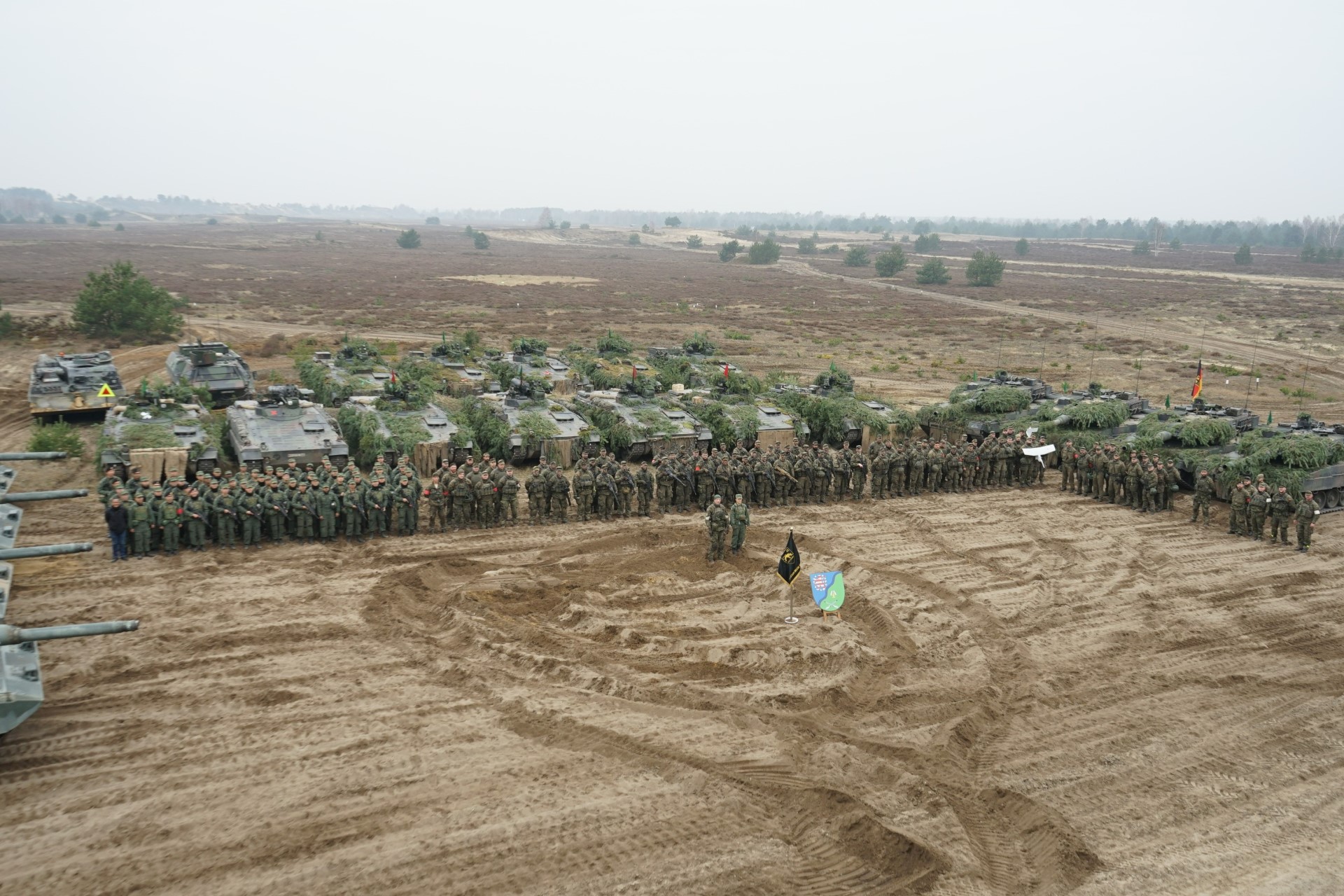Exercise Panzer Strike is an armour training and live-firing exercise conducted by the Singapore Armed Forces (SAF) in the Oberlausitz Military Training Area (OMTA), Germany. It will take place in two frames in spring and autumn. During this year's spring frame, the SAF successfully conducted a bilateral live-firing exercise with the Bundeswehr (German Armed Forces) from 8 to 15 March, involving approximately 85 servicemen from 3rd Company, 48th Battalion Singapore Armoured Regiment (48 SAR) with their German Army counterparts from 391st Panzergrenadier Battalion. The bilateral exercise also included professional exchanges with discussions on Standard Operating Procedures and Tactics, Techniques and Procedures.
The two training frames will involve 14 Leopard 2SG Main Battle Tanks (MBTs), 14 Hunter Armoured Fighting Vehicles (AFVs) and servicemen from 48 SAR and Armour Training Institute. The servicemen will undergo a series of manoeuvre live-firings with the Leopard 2SG MBTs and the Hunter AFVs to hone their skills in gunnery and manoeuvre.
First conducted in 2009, this year marks the 15th edition of the exercise. The large training space in OMTA, which is a quarter of the size of Singapore, allows the Singapore Army to execute more complex mission scenarios on a larger scale and in an integrated manner. Training can be conducted more efficiently with concurrent live-firing of up to four ranges for armoured units. The opportunity to train in Germany has strengthened the professionalism and capabilities of the SAF Armour formation, and reinforced professional ties between the Singapore Army and their German counterparts.
Exercise Panzer Strike underscores the strong and substantive defence relations between Singapore and Germany. The two countries interact regularly through high-level visits and dialogues, military exchanges, cross-attendance of professional courses and technological collaboration. These interactions have reinforced the professional ties between the two defence establishments.
 Personnel from the Singapore Armed Forces (SAF) and the Bundeswehr successfully concluded the bilateral live-firing in Exercise Panzer Strike, in the Oberlausitz Military Training Area, Germany.
Personnel from the Singapore Armed Forces (SAF) and the Bundeswehr successfully concluded the bilateral live-firing in Exercise Panzer Strike, in the Oberlausitz Military Training Area, Germany.
 The SAF Leopard 2SG Main Battle Tanks conducting live-firing as part of Exercise Panzer Strike.
The SAF Leopard 2SG Main Battle Tanks conducting live-firing as part of Exercise Panzer Strike.
 As part of Exercise Panzer Strike, the SAF service personnel and their Bundeswehr counterparts exchanged domain knowledge during the bilateral static display.
As part of Exercise Panzer Strike, the SAF service personnel and their Bundeswehr counterparts exchanged domain knowledge during the bilateral static display.



